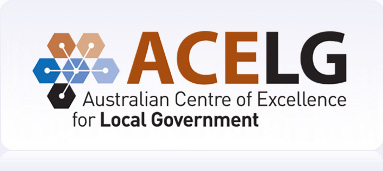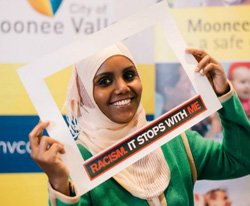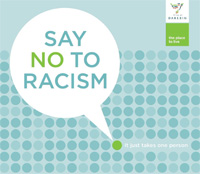Overview
 Good practice in building social cohesion starts with local governments making a long-term strategic commitment and then implementing systems and processes towards achieving this. Critically, local governments need to assess internal readiness and build internal capacity before engaging the community and leading change.
Good practice in building social cohesion starts with local governments making a long-term strategic commitment and then implementing systems and processes towards achieving this. Critically, local governments need to assess internal readiness and build internal capacity before engaging the community and leading change.
The key steps are:

 Local governments need to make social cohesion a priority in strategic planning. This commitment needs to be explicit and requires a clear line of sight between strategic plans, policies, actions and performance indicators. Key organisational drivers for this are the clear links to
Local governments need to make social cohesion a priority in strategic planning. This commitment needs to be explicit and requires a clear line of sight between strategic plans, policies, actions and performance indicators. Key organisational drivers for this are the clear links to  A tailored approach, based on an analysis of gaps and barriers which may exist within local government, is needed to prepare senior executives, staff and elected members to commit to implementing social cohesion objectives.
A tailored approach, based on an analysis of gaps and barriers which may exist within local government, is needed to prepare senior executives, staff and elected members to commit to implementing social cohesion objectives.
 The Racism. It Stops With Me campaign, led by the Australian Human Rights Commission, aims to empower individuals and organisations to prevent and respond effectively to racism. Organisations can pledge their support for the campaign and commit to undertake activities to combat racism and support social cohesion.
The Racism. It Stops With Me campaign, led by the Australian Human Rights Commission, aims to empower individuals and organisations to prevent and respond effectively to racism. Organisations can pledge their support for the campaign and commit to undertake activities to combat racism and support social cohesion.  Early in 2011, a national research project found that Darebin City Council had higher levels of racism than the state average. However, views on multiculturalism were more positive than average. As a consequence, Council launched a Racism Inquiry to better understand these contradictory findings. This resulted in the Darebin City Council Racism Inquiry Report 2012 and the City of Darebin Anti-Racism Strategy 2012-2015.
Early in 2011, a national research project found that Darebin City Council had higher levels of racism than the state average. However, views on multiculturalism were more positive than average. As a consequence, Council launched a Racism Inquiry to better understand these contradictory findings. This resulted in the Darebin City Council Racism Inquiry Report 2012 and the City of Darebin Anti-Racism Strategy 2012-2015.

